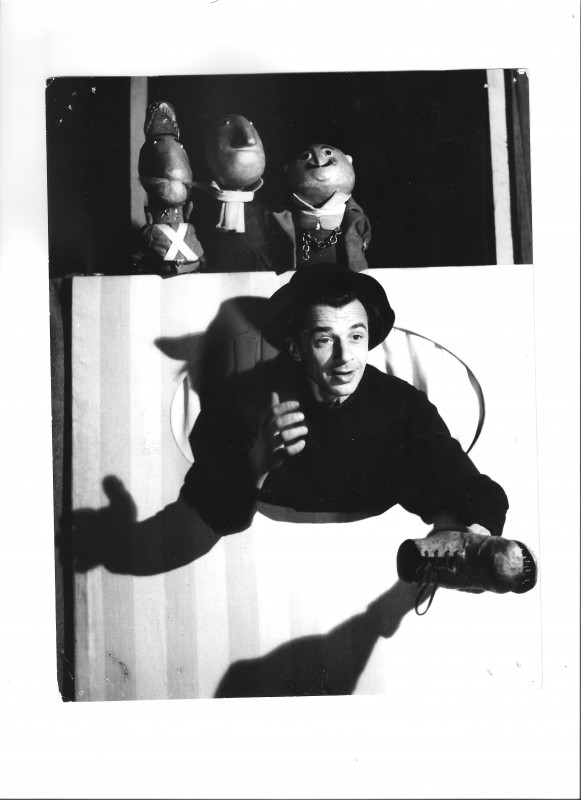News - Teatr Lalka
Back01.12
Jan Wilkowski (1921-1997)
To mark the 20th anniversary this December of the death of Jan Wilkowski—director, puppeteer, for many years the artistic director of Teatr Lalka, author of plays for stage and television, and teacher—we would like to share a profile of this distinguished artist. A graduate of Janina Kilian-Stanisławska’s Puppet Theatre School, he debuted in the show Madam Twardowska [Pani Twardowska] in the role of Mephistopheles at the Blue Almonds Marionette Theatre (later renamed Teatr Lalka). From 1952 to 1969 he served as the artistic director of Teatr Lalka. During that period, many of his famous shows would appear, going on to win awards at international festivals, such as Ivan the Great [Wielki Iwan] (1954), Guignol in a Stew [Guignol w tarapatach] (1956), The Enchanted Piano [Zaczarowany fortepian] (1957), Zwyrtała the Fiddler, or How a Highlander Went to Heaven [O Zwyrtale Muzykancie, czyli jak się góral dostał do nieba] (1958), Pietrek the Tiger [Tygrys Pietrek] (1962), and We and the Dwarves [My i krasnoludki] (1967). All of these shows were presented in cooperation with scenographer Adam Kilian. Wilkowski constructed Guignol in a Stew on the principle of a theatre within a theatre, also maintaining the Brechtian convention of epic theatre, with songs commenting on the stage events. Henryk I. Rogacki wrote of Wilkowski’s character of the Parisian puppeteer Jean in that show: “The figure of Jean suddenly assumed the features of Geppetto or the music-box player Papa Carlo, and the Guignol puppet was akin to Pinocchio or Buratino. Of foremost importance was the relation between the puppet and its creator, or rather the creator of its life in the theatre: an extraordinary relation, an intriguing mystery of art and a fascinating riddle for art.” Zwyrtała the Fiddler, “painted on glass” and regarded as “the best show in the history of world puppeteering,” set the direction for development of Polish and European puppet theatre for years to come. Henryk Jurkowski said of the show: “It was the most distinguished presentation by Wilkowski and Kilian. It discovered Highlander folklore for the puppet theatre and restored to the puppets their existence as works of visual art, derived from figurative folk art. It documented a new path for Polish theatre.” In the 1960s and 1970s, Jan Wilkowski created puppet theatre for television, reaching wide audiences with such shows as The Enchanted Steed [Zaklęty rumak] (1966) and Galoshes of Happiness [Kalosze szczęścia] (1967), also with Adam Kilian’s scenography, as well as TV series (Theatre in a Basket [Teatrzyk w koszu], Ula from the First Grade [Ula z I B]). In 1974 he cofounded the Białystok-based Department of Puppet Theatre Arts of the Warsaw State Academy of Drama, where in 1974–1980 he served as dean and lectured in the newly established Faculty of Puppet Theatre Direction (1981–1990).

We hope that the exhibition of archival photos and puppets, the accompanying documentary film by Maria Nockowska, and the special publication prepared by Teatr Lalka to mark the occasion, will acquaint our viewers with the works of Jan Wilkowski, who masterfully combined the language of metaphor, convention and brevity, with the skill of communicating the secrets of the contemporary world—its beauty and complexity.
Jan Wilkowski (Jean), "Guignol in a Stew", 1956, photo Edward Hartwig (JPG, 2401KB)
Jan Wilkowski (Jean), "Guignol in a Stew", 1956, photo Edward Hartwig (JPG, 4340KB)